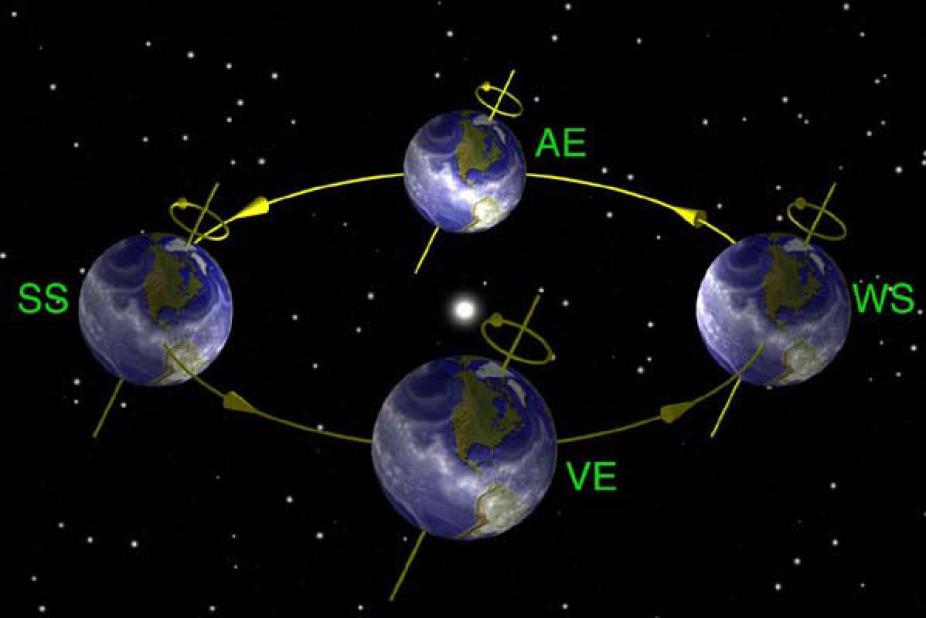The Seasons
Before we begin exploring the various techniques and devices used by the Puebloans for calendrical and/or ceremonial astronomical observations, it will prove useful to first briefly review some basic astronomical facts pertaining to the seasons.

A schematic depiction of the Earth orbiting around the Sun.
The figure shows a schematic depiction of the Earth orbiting about the Sun. The diagram is NOT to scale; if it were, the Earth would be hardly visible, since it is 110 times smaller than the Sun. The spin axis of the Earth (drawn in yellow in the figure) is inclined by 23°30' with respect to its orbital axis (oriented vertically on the slide) about the Sun. The Earth's orbit is very nearly circular, even though it has in fact the shape of an ellipse of very low eccentricity. In the course of an orbit, which takes one year (by definition!), the direction in space toward which the Earth's spin axis points does not change, a consequence of angular momentum conservation. At summer solstice (June 21, position SS on the slide) it points towards the Sun, and away from it at winter solstice (WS, December 21). At the vernal and autumnal equinoxes (March 21 and September 21, VE and AE) the spin axis is perpendicular to a straight line joining the Earth and Sun. See further explanation in the appendix.
As detailed on the next slide, the varying orientation of the Earth's spin axis with respect to the Earth-Sun line translates into different apparent paths of the Sun in the sky as seen from the Earth's surface, in turn leading to varying durations of the day in the course of the year. This implies that the amount of solar energy received at a given location on Earth also varies in the course of the year. This is what causes the seasons. Summer is warmer because the days are longer and the Sun is higher in the sky (which favors absorption of sunlight by the atmosphere). If the Earth's spin axis was exactly parallel to its orbital axis, days would always be twelve hours long, the Sun would always draw the same path in the sky as seen from a given location, and there would be no seasons.